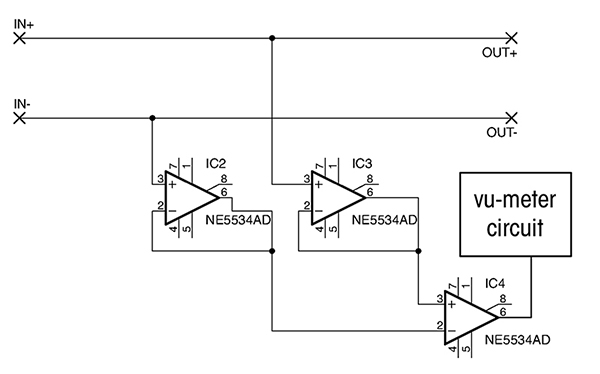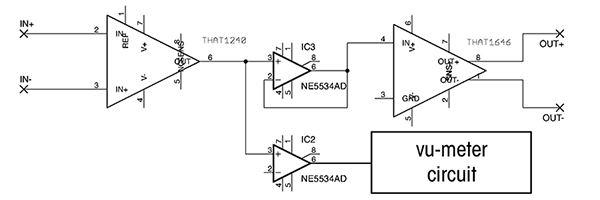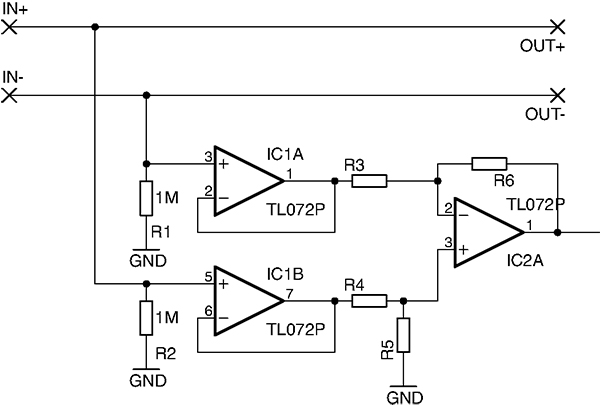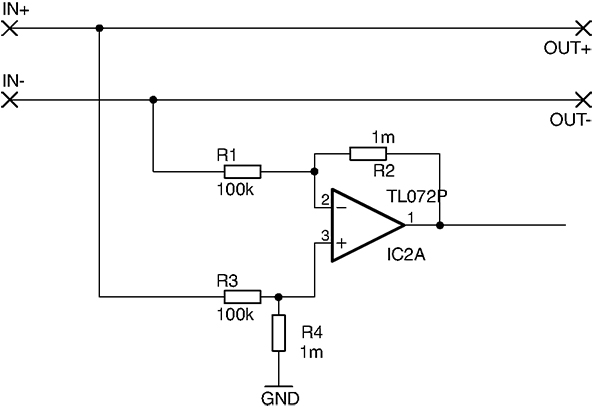> get the less distortion possible on my source...
Then don't break the Main Line with unbalance/balance chips. The THAT chips are incredibly clean, but why have them at all?
Use a HIGH impedance differential input. Basic idea is that 10X higher impedance does very small damage. Here you want !VERY! small damage, go at least 100X. 1,000X is actually easy. Say most good sources today are 47 Ohm output, twice. A TLO72 can be biased with 1Meg resistors, use two to buffer. That is a 2Meg load on a 94 Ohm source, 20,000X loading.
If "VU" means an actual mechanical meter, you don't even have to un-balance the signal. A meter floats and can be bridged across two buffer outputs. Most "VU-like light-shows" will need an unbalanced input.








